What do you do when your beautiful company was built on a foundation of admirable ethics and values, but entry into the profitable international markets would force you to compromise those morals?
Do you abandon those established, two-decade-old ethical roots to make killer profits? Or do you sacrifice tremendous market opportunity to stick to your beliefs?
In 2012, Urban Decay Cosmetics faced this decision – and made the right call.
Urban Decay is a top-shelf makeup company that was founded in 1996 by two women who wanted to shake up the cosmetics industry. The company was started by Sandy Lerner (co-founder of Cisco Systems) and Wende Zomnir in Laguna Beach, California. It was intended to turn the makeup industry on its head, and did so with flying colors – literally.
“When we launched in 1996, the prestige beauty market was a sea of pink, red and beige. We gave women the alternative makeup colors they craved and challenged them to defy the stereotypical notions of beauty” (Urban Decay: The Ultraviolet Edge, 2015).
Since their inception they have upheld the highest values and ethics, with efforts to help empower women, protect animals, and save the environment. Urban Decay has three commitments (Urban Decay Cosmetics Commitments, 2015):
In March, 2015, founders Lerner and Zomnir launched The Ultraviolet Edge, a fund to raise money to empower women globally. Urban Decay released a special line of makeup called Enigma where 100% of the purchase price goes to The Ultraviolet Edge. Urban Decay has a goal to donate $500,000 this first year, and a plan to donate three million dollars over the next five years (Urban Decay: The Ultraviolet Edge, 2015). The largest beneficiary of The Ultraviolet Edge is the Women’s Global Empowerment Fund, which provides “women in post-conflict Uganda with microloans and a broad range of leadership development and education programs” (Urban Decay: The Ultraviolet Edge, 2015).
- Animal Testing Policy
“Urban Decay is a cruelty-free brand and is committed to ending animal testing. We do not test our products on animals, nor do we allow others to test on our behalf. Additionally, we require our suppliers to certify that the raw materials used in the manufacture of our products are not tested on animals. Our Brand is certified by both PETA and The Leaping Bunny Program (CCIC) as cruelty-free” (Urban Decay: Commitments, 2015). The Coalition for Consumer Information on Cosmetics (CCIC), which runs the Leaping Bunny Program, “requires companies and their ingredient supplies to pledge not to test on animals at any stage of development and stay open to independent audits” (Graef, 2012), which means Urban Decay monitors every step of their supply chain to ensure the strictest ethical standards.
Urban Decay can attribute much of its success to the “loyal customers it built from having an intrinsic policy of ending animal testing and not conducting animal testing on its own products” (Garcia, 2013). This commitment to abolishing animal testing is a big selling point, and very important to their loyal customers.
- Vegan Products
“Urban Decay certifies that our products marked vegan do not contain any animal-derived ingredients” (Urban Decay Cosmetics Commitments, 2015). The company has just a handful of vegan products, but has an “ongoing initiative with our laboratories to not only create shades (and entire product lines) that are vegan from the start, but also to identify which of our non-vegan products can be converted” (Urban Decay Cosmetics Commitments, 2015).
Here is a picture of their best-selling vegan eyeshadow line, named after their popular slogan, “We don’t do animal testing, how could anyone?”
In 2012, Urban Decay made a powerful ethical choice that deeply tested their second commitment.
Urban Decay’s Big Ethical Decision
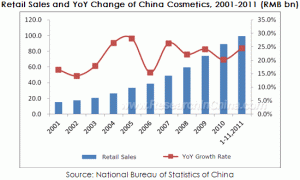 On June 6, 2012, Urban Decay announced that it would begin selling its products in China, where the cosmetics market was extremely lucrative. The year before, “in 2011, China’s cosmetic sales hit 110 billion yuan ($17.8 billion), an increase of nearly 19 percent over 2010. According to a 2012 report by Li & Fung Research Centre, during one month in 2011, Urban Decay’s competitors Estée Lauder and Clinique saw sales increase by almost 10 percent alone” (Sauer, 2012).
On June 6, 2012, Urban Decay announced that it would begin selling its products in China, where the cosmetics market was extremely lucrative. The year before, “in 2011, China’s cosmetic sales hit 110 billion yuan ($17.8 billion), an increase of nearly 19 percent over 2010. According to a 2012 report by Li & Fung Research Centre, during one month in 2011, Urban Decay’s competitors Estée Lauder and Clinique saw sales increase by almost 10 percent alone” (Sauer, 2012).
Urban Decay of course wanted to break into this hot market, but there was one catch. In February 2012, the China Food and Drug Administration created mandatory animal testing on all cosmetic products sold in the country, which directly conflicted with Urban Decay’s core mission of cruelty-free makeup (Huang, 2014). Urban Decay wasn’t the only company shocked by this new mandatory animal testing. In February when this policy went into action, China effectively shut “a multibillion-dollar market to international manufacturers like The Body Shop and Lush cosmetics, both based in Britain, which were committed to nonanimal testing methods” (Huang, 2014). However, many other foreign companies, like Avon and Estée Lauder, chose to loosen their no-animal testing policies in order to continue to sell to China (Huang, 2014). That was not well received by the American public, but the companies that compromised their morals were generously rewarded by the avid Chinese consumers, and sales skyrocketed internationally.
Point of Interest: This animal testing policy has since been amended to only require testing on most products rather than all, but not until two years later, on June 30, 2014…
So when Urban Decay announced the decision in June 2012 to sell in China, it’s no surprise PETA sprang into action. PETA released a biting public statement calling Urban Decay out for their “Decaying Principles.” The statement had an excerpt, “After years of touting its ‘no animal testing’ policy, Urban Decay has let down caring consumers everywhere. The company opted to start selling its products in China even though Chinese law requires that cosmetics companies pay for many of their products to be tested on animals in Chinese laboratories before they can be marketed in that country… Please let Urban Decay know that you won’t buy its products until the company is 100 percent cruelty-free once again” (Sauer, 2012). PETA set up various protest sites, such as a Boycott Urban Decay Facebook page and a Change.org petition, which were quite successful, and organized hundreds of activists to email Urban Decay with their outrage (Sauer, 2012). It threw Urban Decay into a full PR crisis.
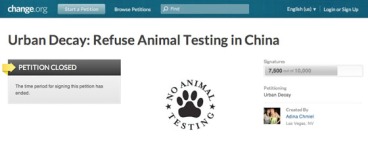 Within a month, on July 6th, 2012, Urban Decay announced that it will not sell its products to China. Urban Decay released a statement saying, “After careful consideration of many issues, we have decided not to start selling Urban Decay products in China. While several factors were important in reaching this decision, ultimately we did not feel we could comply with current regulations in China and remain true to our core principles” (Kretzer, 2012).
Within a month, on July 6th, 2012, Urban Decay announced that it will not sell its products to China. Urban Decay released a statement saying, “After careful consideration of many issues, we have decided not to start selling Urban Decay products in China. While several factors were important in reaching this decision, ultimately we did not feel we could comply with current regulations in China and remain true to our core principles” (Kretzer, 2012).
PETA immediately applauded the decision, updating its original negative blog post to say “Urban Decay Restored to Cruelty-Free List” (Kretzer, 2012). “But PETA wasn’t done, and saw an opportunity to make an example of Urban Decay as part of Peta’s fight against China’s testing standards” (Sauer, 2012). Three days after Urban Decay announced it would no longer enter China’s market, PETA awarded the brand the PETA Courage in Commerce Award. When delivering the award, PETA noted, “While many companies have shed their cruelty-free policies as easily as last year’s fashion for a share of the profits from China, Urban Decay officials have decided that the cost was too high” (Sauer, 2012).
PETA’s VP, Kathy Guillermo, shared, “More than a dozen companies, including Avon, Mary Kay, Revlon and Estee Lauder have decided their cruelty-free pledge means nothing compared with the profits they anticipate from selling their products in China. Urban Decay, after talking with us, decided they would do the right thing—and by doing so, they show the moral decay of companies who no longer care that animals will die so that they can sell their products. We are thanking them for having the decency to say no” (Sauer, 2012).
Since then, Urban Decay has stuck to their word of cruelty-free cosmetics. And even after China relaxed their animal-testing policy this last summer, Urban Decay has steered clear of that ethically ambiguous scene, and been better for it.
The Ethics of Urban Decay’s Decision
Urban Decay’s decision to withdraw from the Chinese market was deontologist, specifically Kantian.
Norman Bowie (2002) explains that “Kant’s influence on [the] branch of ethical theory known as deontology is so strong that some writers simply refer to deontology as Kantianism” (Bowie, 2002, p. 3). He continues to say, “Persons of good will do their duty because it is their duty and for no other reason. It is this emphasis on duty, and the lack of concern with consequences that makes Kant the quintessential deontologist” (Bowie, 2002, p. 4).
The decision to exit China after exactly one month was very Kantian because the executives realized their absolute duty to abstain from animal testing, and they weren’t concerned with the consequences of losing that profitable Chinese market share.
This is clear from three Kantian beliefs: The Universal Law Rule, the Means-to-an-End Test, and the Minimal Duty analysis.
First, Immanuel Kant (1995), states, “The universal imperative of duty may be expressed thus: Act as if the maxim of your action were to become through your will a universal law of nature” (Kant, 1995, p. 30). When every man makes decisions according to the Universal Law Rule, which puts actions to the “if everyone did this, would the world be a better or worse place?” test, society will be infinitely better. Kant believes you should live your life so the maxim of your actions is along the lines of universal moral law, and it can easily be applied to companies, not just individuals.
Urban Decay absolutely passes the Universal Law Rule with their commitment to animal rights and abstinence from animal cruelty. If every makeup company made the decision Urban Decay did, China’s Food and Drug Administration would be forced to revoke their mandatory animal testing policies, and the cosmetic industry – and world – would be a better place.
Second, Kant also believes in the Means-to-an-End Test (Kant, 1995), which asks the ethical agent, “Are you treating that individual as an end or simply as a disposable mean?” It is clear that animal testing uses animals as nothing more than means to get to the cosmetic marketplace end. Kant would argue that animal testing absolutely fails the means-to-an-end test, and therefore is fundamentally immoral. Urban Decay recognized that the unethical means of animal testing were not worth the profitable Chinese end.
Bowie continues that “Since human beings have free will and thus are able to act from laws required by reason, Kant believed they have dignity or a value beyond price. Thus, one human being cannot use another to satisfy his or her own interests. This is the core insight behind Kant’s second formulation of the categorical imperative: ‘Always treat the humanity in a person as an end and never as a means merely’” (Bowie, 2002, p. 7). Although animals are unable to ‘act from laws required by reason,’ I believe they qualify for the same level of dignity and value, which is above price. When I extensively studied Kant in Professor Gary Steiner’s philosophy class, “Gods, Humans, and Animals,” we argued that animals have the same moral status as humans, and therefore animals should not be used as a means-to-an-end any more than a human should. Urban Decay clearly agrees, which is why they’re an admirable company with prestigious certifications from PETA and The Leaping Bunny Program.
However, this was academic extrapolation, because Bowie states that “Kant had nothing to say about environmental ethics and had little understanding of the suffering of animals and thus held a truncated view of our obligations to animals” (Bowie, 2002, p. 12). I am applying Kantianism with the assumption that animals and humans should be treated with equal moral weight.
Third and finally, Thomas J. Donaldson (1990) explains that rights establish minimal corporate responsibilities. He states, “’Minimal’ duties for multinational corporations are similar to Kant’s ‘perfect’ duties; that is, they are mandatory and allow no discretion as to when or how they are performed. A ‘maximal’ duty, on the other hand, is one whose fulfillment would be praiseworthy but not absolutely mandatory” (Donaldson, 1990, p. 140).
Urban Decay sees animal rights as a ‘minimal duty’ in that it is non-negotiable for their company – it’s a pillar of the company’s commitments. The American cosmetic industry as a whole sees respecting animals as a ‘maximal duty’ and applaud companies that do not test on animals, but don’t see it as an imperative minimal duty. China’s cosmetic industry from 2012 to 2014 saw the practice of animal testing as a ‘minimal duty,’ making it mandatory by law for all cosmetic products sold in the country. It makes sense that Urban Decay terminated their contract with China, because their minimal duties are fundamentally incompatible.
It is clear that Urban Decay made a Kantian ethical analysis with the Universal Law Test, the Means-to-an-End Test, and the Minimal Duty Analysis, and decided that upholding their commitment against animal cruelty was more important than the potential market gain. I believe they made the right choice.
Photos (in order of appearance):
3. http://wgefund.org/wp-content/uploads/2015/03/ultravioletedge1.jpg
4. http://static3.refinery29.com/bin/entry/0eb/x/484589/urban-decay-animal-cruelty-beauty.jpg
5. http://www.hotbeautyhealth.com/wp-content/uploads/2010/07/urban-decay-vegan-palette.jpg
6. http://www.researchinchina.com/UpLoads/Article/2012/AM/20120205.gif
7. http://images.china.cn/attachement/jpg/site1007/20110704/0019b91ed7d10f7b5cc502.jpg
8. http://www.brandchannel.com/home/image.axd?picture=2012%2F7%2Furban_decay_change_petition.jpg
9. https://beautyschooled.files.wordpress.com/2009/11/article-0-026fbbdd000004b0-473_306x466.jpg
10. http://glamourglutton.com/wp-content/uploads/2013/09/51dab89f572b940233000583.jpg
Sources:
Bowie, N.E. (2002). “A Kantian approach to business ethics.” P. 3-16.
Donaldson, T.J. (1990). “Rights in the Global Market.” P. 139-162.
Garcia, C. (2013, April 21). “Urban Decay – Expanding to China Requires Animal Testing.” Business Ethics Case Analysis. Retrieved 30 March, 2015 from http://businessethicscases.blogspot.com/2013/04/urban-decay-expanding-to-china-requires.html
Graef, A. (2012, July 7). “Urban Decay Gets Cruelty-Free Status Back.” Care2. Retrieved 29 March, 2015 from http://www.care2.com/causes/urban-decay-gets-cruelty-free-status-back.html
Huang, S. (2014, June 30). “China Ends Animal Testing Rule for Some Cosmetics.” The New York Times Sinosphere: Dispatches From China. Retrieved 26 March, 2015 from http://sinosphere.blogs.nytimes.com/2014/06/30/china-ends-animal-testing-rule-for-some-cosmetics/?_r=0
Kant, I. (1995, October 15). Ethical Philosophy: Grounding for the Metaphysics of Morals, and, Metaphysical Principles of Virtue (1785). Indianapolis, Indiana: Hackett Classics.
Kretzer, M. (2012, July 6). “Urban Decay Restored to Cruelty-Free List.” PETA. Retrieved 26 March, 2015 from http://www.peta.org/blog/urban-decay-s-decaying-principles/
Sauer, A. (2012, July 10). “PETA Protest Leads Urban Decay to Boycott China, Win PETA Award.” Brand Channel. Retrieved 26 March, 2015 from http://www.brandchannel.com/home/post/2012/07/10/Urban-Decay-China-Animal-Boycott-071012.aspx
Urban Decay: The Ultraviolet Edge. (2015). “The Ultraviolet Edge: Urban Decay’s Global Initiative to Empower Women.” Urban Decay Cosmetics. Retrieved 26 March, 2015 from http://www.urbandecay.com/uvedge/organizations
Urban Decay: Commitments. (2015). “Commitments.” Urban Decay Cosmetics. Retrieved 26 March, 2015 from http://www.urbandecay.com/commitments/commitments.html
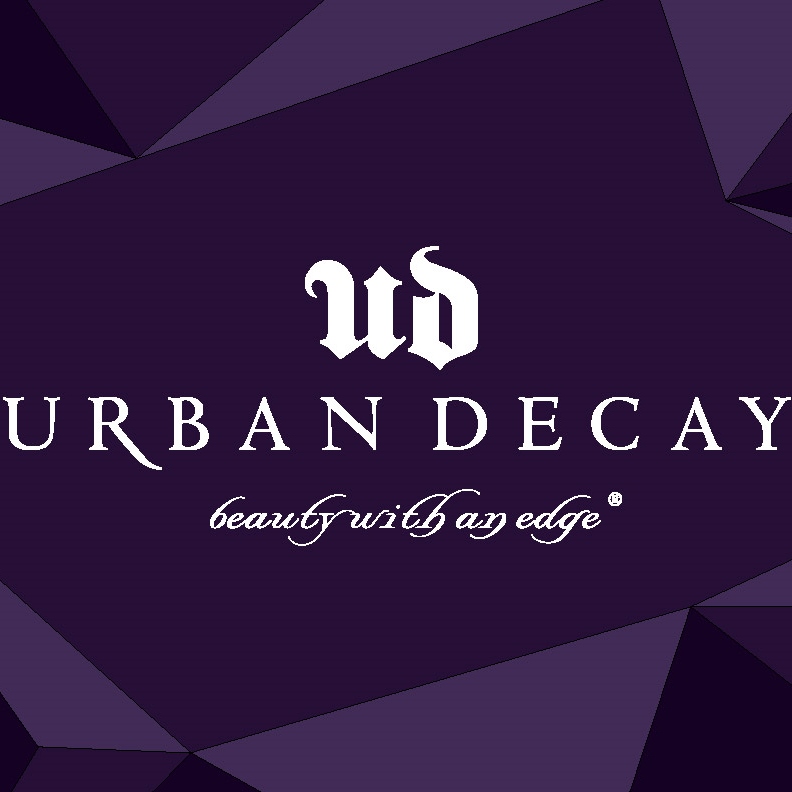
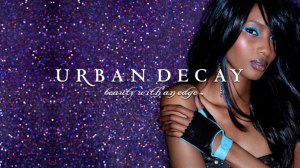

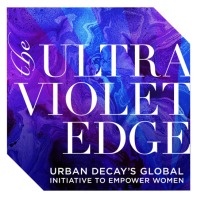
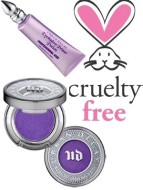
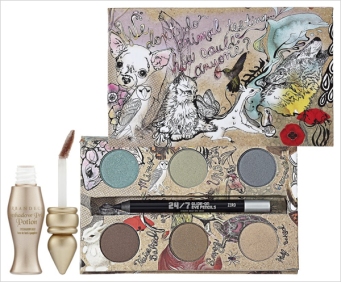
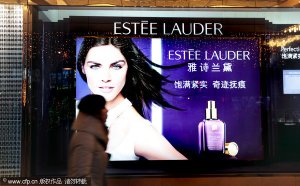

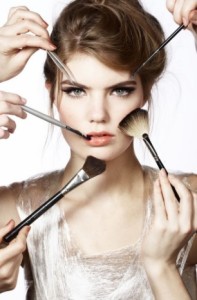

I had not heard of Urban Decay. Odd name for make up.
You provide a very thorough account of the ethical dilemma they faced.
Is Urban Decay privately held? Are the big players in make up? DO you think that makes a difference?
Ironically, China’s policy may have been part of an effort to improve consumer safety after many problems over the years with dangerous products released in their domestic market.
Could Urban Decay (and maybe other make up companies?) tried to reason with Chinese government?
LikeLike